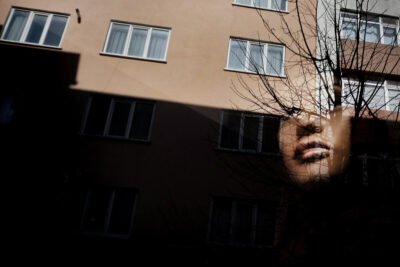Let’s talk about what we should be learning from these celebrity court cases—about abuse, about loyalty, and about truth. Time and again, we see wo

Let’s talk about what we should be learning from these celebrity court cases—about abuse, about loyalty, and about truth.
Time and again, we see women—especially Black women, women of color, and other marginalized women—trying to protect the very people who harmed them.
They try to keep things private.
They try to shield minoritized males from a justice system that devours them.
They try to manage the damage in silence.
But when everything finally comes to light—through court transcripts, police reports, or public testimony—the very same public that claims to hate “snitches” turns around and says:
“Why didn’t she tell anyone?”
“Why didn’t she speak up sooner?”
“Why lie?”
What we should be asking is:
Why are women still expected to pay the price for men’s wrongdoing—with their reputations, their safety, their peace?
When the truth comes out, it’s rarely a moment of justice.
It becomes a spectacle.
A shiny red light of misogyny and sexism, engineered to distract us from the real harm.
People don’t want accountability—they want entertainment. Lights, camera, action.
And they want someone to blame.
That blame almost never lands on the man who committed the harm.
Instead, it falls on the woman who “waited too long to tell.”
The woman who tried to survive with dignity.
The woman who didn’t want the world to know her pain or her personal business.
The woman who stayed quiet because she was trying to protect her children, her career, her own sanity.
That’s the cycle.
That’s the trap.
Every time we engage in clickbait-driven outrage, minute-by-minute updates of her humiliation, we are helping silence someone else.
Because someone is watching.
A Survivor is watching.
And she’s learning that if she ever dares to speak, this world is more interested in her shame than in her truth.
So if you’re asking why she didn’t say anything…
You’re not ready to hear what she would’ve said.
YOU are not ready for that.
🚨 Reporting and Justice System Response
Underreporting: Only 310 out of every 1,000 sexual assaults are reported to police, meaning more than two-thirds go unreported. RAINN+2RAINN+2RAINN+2
Legal Consequences: Out of every 1,000 sexual assaults:
57 reports lead to an arrest.
11 cases are referred to prosecutors.
7 cases result in a felony conviction.
6 perpetrators will be incarcerated. RAINN+5RAINN+5RAINN+5
🎓 Sexual Violence on College Campuses
Prevalence Among Students:
13% of all students experience rape or sexual assault through physical force, violence, or incapacitation.
Among undergraduate students, 26.4% of females and 6.8% of males experience such incidents. RAINN
Reporting Rates: More than 90% of sexual assault victims on college campuses do not report the assault.
🧠 Impact on Survivors
Mental Health: 81% of women and 35% of men report significant short-term or long-term impacts such as Post-Traumatic Stress Disorder (PTSD). National Sexual Violence Resource Center
Economic Cost: Each rape costs approximately $151,423, and annually, rape costs the U.S. more than any other crime ($127 billion).
🔍 Additional Insights
Perpetrator Relationship:
In 8 out of 10 cases of rape, the victim knew the person who sexually assaulted them.
51.1% of female victims of rape reported being raped by an intimate partner, and 40.8% by an acquaintance. National Sexual Violence Resource Center+1National Sexual Violence Resource Center+1National Sexual Violence Resource Center
False Reporting: The prevalence of false reporting for sexual assault crimes is low—between 2% and 10%. National Sexual Violence Resource Center+1National Sexual Violence Resource Center+1
📊 Prevalence of Sexual Violence
Frequency: Every 68 seconds, an American is sexually assaulted. RAINN+3RAINN+3RAINN+3
Lifetime Experience:
1 in 6 American women has been the victim of an attempted or completed rape.
Approximately 3% of American men—or 1 in 33—have experienced an attempted or completed rape. RAINN+1RAINN+1
Child Victims:
1 in 9 girls and 1 in 20 boys under the age of 18 experience sexual abuse or assault.
82% of all victims under 18 are female.
Male Predators Are Male: Why Language Matters for Survivor Justice